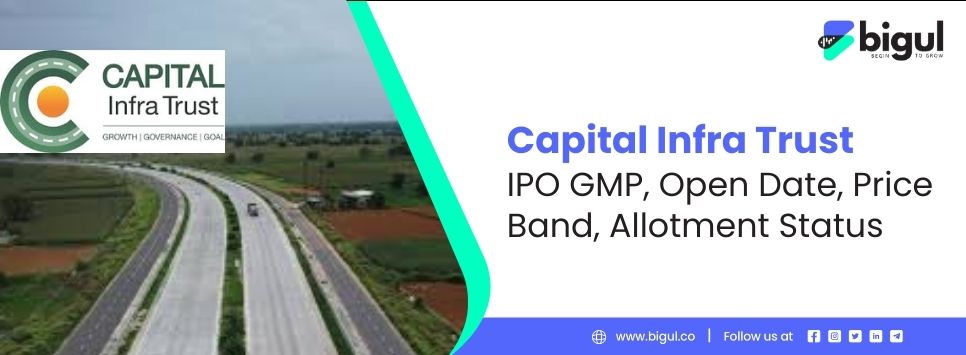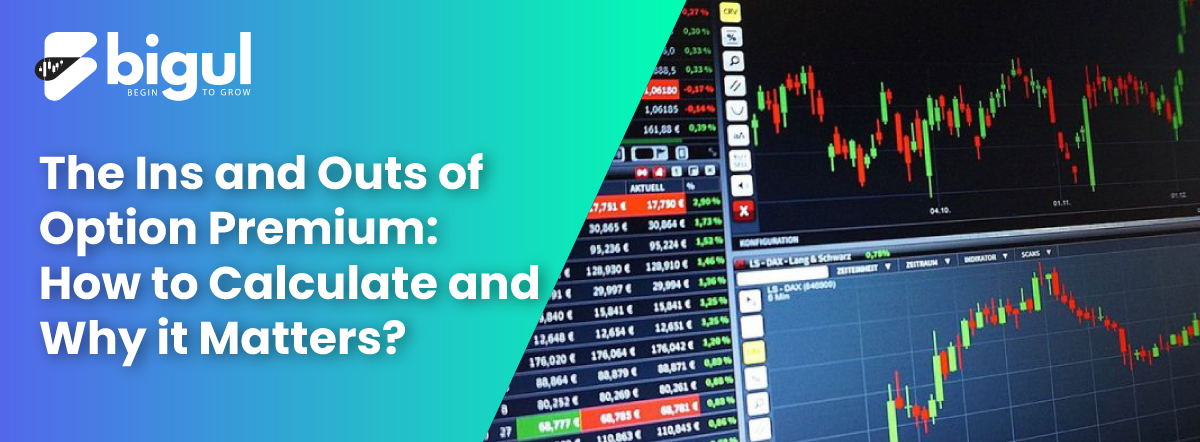Trading options is an excellent approach to making revenue on the stock market. But you need a good idea of how it works. In options trading, the option premium is a key factor. The option premium is the price an option buyer pays an option seller for the right to purchase or sell an underlying asset at a certain price and time.
Also Read | Understanding Option Trading Strategies: Long and Short Calls
How is the Option Premium Calculated?
Beginner options traders struggle with this question. The option premium depends on several factors, including the underlying asset’s price, time to expiry, volatility, and interest rates. This article will explain option premiums and their calculation. So, let’s begin.
What is Option Premium?
The option premium is the price an option buyer pays for the right to buy or sell an underlying financial instrument. The option premium is the fee an option writer receives in exchange for the obligation to buy or sell an option contract. Option buyers can use the premium to determine if an option contract’s price is appealing.
For example, when evaluating a call option, the buyer will consider whether the premium, plus any intrinsic value, is worth the contract’s cost.
On the other hand, option writers can use the premium to hedge their positions and increase their returns. This is because option premiums can insure against losses from a drop in the underlying asset’s price. The premium can reduce the impact of an unfavourable occurrence like a portfolio financial instrument price drop.
How to Calculate Option Premium?
Option premium calculation incorporates several aspects that impact option value. However, intrinsic value, temporal value, and volatility make up the option premium.
Intrinsic Value
Intrinsic value is independent of time value. It is an important notion in options trading. It’s the difference between the option’s strike price and the asset’s market price.
The intrinsic value of a call option is the underlying asset’s Spot price over the strike price. A call option with a strike price of Rs 300, trading at 50 Stock price value is Rs 350, has an intrinsic value of Rs 50 (Rs 350 – Rs 300) (Spot Price – Strike Price)
A put option’s intrinsic value is the strike price’s excess over the underlying asset’s price. A put option with a strike price of Rs 250 trading at 50 and a stock Trading at Rs 200 has an intrinsic value of Rs 50 (Rs 250- Rs 200) (Strike Price – Spot Price)
If an option has no inherent value, it is “out of the money.” If the option’s strike price matches the underlying asset’s market price, it is “at the money.” If a call option’s strike price is below the underlying asset’s market price or above it for a put option, it is “in the money.”
Options premiums depend on intrinsic value. Out-of-the-money options have just temporal value, but in-the-money ones have intrinsic value. Deep-in-the-money options may have a larger intrinsic value than their temporal value, whereas options nearing expiration may have the opposite.
Options traders must understand the intrinsic value to assess trade profitability and decide when to purchase or sell options.
Time Value
Time value is an option’s premium representing the probability that the buyer’s price may rise before expiration. It’s the difference between the option’s entire premium and intrinsic value.
Let’s assume a stock call option has a 50-strike price and a 3 premium. The option has no intrinsic value if the stock price is 48 below the strike price. The option has temporal value since the stock price may rise over the strike price before the expiration.
Time value depends on elements including expiry date, asset volatility, and interest rates.
An option’s time value declines as its expiration date approaches because the underlying asset has less time to move in the option buyer’s favour. Options traders consider “Time decay” or “Theta decay” when buying or selling options.
Options traders must understand time value since it affects profitability. High-time value options cost more but have a larger profit potential. On the other hand, low-time value options cost less but have a lower profit potential.
Volatility
Volatility is a statistical measure of price volatility in a financial asset over time. It is commonly used as a risk indicator since assets with high volatility might suffer substantial price swings in a short time.
Volatility can be measured in several ways, including:
- Standard Deviation: Standard deviation quantifies asset price variation over a given period.
- Beta: Beta measures an asset’s volatility in relation to the overall market.
- Implied Volatility: Implied volatility is calculated from an option’s market price and shows the market’s anticipation of future volatility.
Consider two equities, Company A and Company B. Company A’s pricing is steady and low-volatile. Company B’s pricing is volatile and can change quickly. Because of its lower price volatility, Company A is less hazardous than Company B.
In options trading, volatility directly affects options pricing. Option prices rise with volatility and vice versa. Volatility helps options traders assess risk and reward.
To calculate the option premium, you would add the intrinsic and time values together. The formula for the option premium is:
Option Premium = Intrinsic Value + Time Value
However, volatility and other factors that affect option premiums are not taken into consideration in this simplistic method. Many options trading platforms offer tools and calculators to estimate option premiums based on these criteria.
The option premium fluctuates with the underlying asset’s price, volatility, and other variables. As an options trader, you must keep educated and adapt to these developments.
To Sum Up
Finally, the option premium is the price an option buyer pays to an option seller for the right to buy or sell an underlying asset at a certain price and time. The option premium is determined by adding the intrinsic value and temporal value, although volatility, interest rates, and market circumstances might affect it. As an options trader, knowing how option premiums are computed is crucial. Considering the option premium’s components helps traders evaluate their bets’ risks and profits. Many tools and resources are available to help traders estimate the option premium based on market conditions.
Staying knowledgeable about option premium components is essential in options trading, which is complicated and ever-changing. With a comprehensive grasp of how option premiums are computed and what factors affect their value, traders can make educated decisions and boost their chances of financial success.
Also Read | Understanding Covered Call Option Trading Strategies






 1.jpg)

.jpg)
